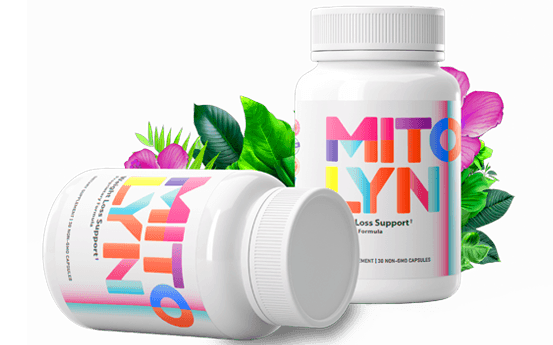Cycle syncing: Should you eat and exercise based on your menstrual cycle?


As women move through their menstrual cycle, hormone fluctuations can affect the way they feel, from bloating and constipation to reduced energy levels and ability to focus. Pretty much as long as women have had menstrual cycles, they’ve tried to come up with strategies to make the symptoms less disruptive.
One of the latest efforts to do so, a phenomenon known as cycle syncing, is taking off online. For example, some TikTok users say laying off hard-core workouts when certain hormones are surging helps them feel better, and increasing your fiber intake can help with period-related tummy troubles.
Like many wellness trends that start on social media, there’s little research to support the effectiveness of cycle syncing — which entails changing your diet and exercise routine to align with your menstrual cycle. But there are still some possible benefits, experts say.
Here’s what to know about cycle syncing and a few tips for working out and eating in tune with your menstrual cycle, according to experts.
What is cycle syncing?
Practitioners of cycle syncing believe that changing their day-to-day routine, especially diet and exercise, according to the phases of the menstrual cycle can help manage some of the symptoms of natural hormonal changes, especially when they have a negative impact.
“Cycle syncing refers to lifestyle modifications based on the timing of one’s cycle. For those who practice cycle syncing, the thought behind it is that changing one’s behaviors during different times of the cycles can help reduce intensity of symptoms and stabilize their mood,” Dr. Asima Ahmad, board-certified reproductive endocrinologist and OB-GYN, and chief medical officer of Carrot Fertility, tells TODAY.com.
Examples of cycle syncing including eating more fiber or protein and doing more or less intense workouts during certain phases of the menstrual cycle — with the end goal of having more energy and feeling less hormonal.
Proponents of cycle syncing often describe it as listening to your body.
“Now that I understand a little bit more about my hormones and how they can affect me throughout the month, I listen to my body a little bit better,” one cycle-syncing practitioner wrote on TikTok.
Benefits of cycle syncing
There’s not much research on what’s considered cycle syncing, so there’s basically no scientifically proven benefits to the practice, according to Dr. Irene Woo, board-certified reproductive endocrinologist and infertility specialist at HRC Fertility.
That said, it is proven that your hormones change over the course of your menstrual cycle depending on the different phases — and that these hormones can affect how you’re feeling, especially your mood and energy levels, Woo tells TODAY.com.
But are these changes the same month-to-month so you can stick with the same approach to manage your hormonal symptoms? Not really, explains Woo. Stress, weight, any medications you’re taking and more can all affect your hormone levels during your cycle.
So, “to say that every month, you will experience the exact same physiologic change in your body so that you can schedule your whole exercise regimen around it, it’s unlikely,” Woo adds.
But there is one main benefit to the practice of cycle syncing, which is why Woo feels positive about the trend overall. Cycle syncing requires an awareness of the different phases of the menstrual cycle, which can benefit your health.
How? If you’re able to feel changes in your cycle, you can talk about them with your health care provider, which can help catch any problematic symptoms earlier.
“It’s kind of exciting to see that just tracking your menstrual cycle can go viral,” she says. “The best part is that this trend encourages women to know their body, to be mindful of where they are in their cycle and the hormonal changes that are happening so that they can really be more generous, forgiving and tender to their bodies.”
You don’t necessarily need to be militant about tracking your cycle to reap these benefits, however, and some experts even discourage this approach.
“Tracking a cycle or two could be helpful to better understand why you feel a certain way and when, but stringent tracking with vigilance to diet and activities could cause more stress and anxiety than it’s worth,” Dr. Anate Brauer, board-certified reproductive endocrinologist and IVF director at Shady Grove Fertility in New York, tells TODAY.com.
Ahmad is of a similar school of thought: She doesn’t bring up cycle syncing with her patients, but she does advise they try to familiarize themselves with their individual menstrual cycles.
“I do recommend that the individual track their symptoms and then discuss them with a doctor before considering cycle syncing to rule out any other medical issues or concerns that may be causing some of their symptoms,” Ahmad says.
What are the different phases of the menstrual cycle?
For women who have regular periods, there are three main phases of the menstrual cycle, and each one comes with its own unique set of symptoms, the experts say.
The follicular phase starts on day one of your cycle, which is the first day your uterine lining from the previous cycle starts to shed, aka your period, Woo explains. Also during the follicular phase, an egg is selected to be the egg for the month, and the body starts to make estrogen around day five, which signals to uterus to stop shedding the lining and instead to start growing it again.
Once the egg is done maturing, there’s another surge of a hormone called LH, or the luteinizing hormone. Then your body releases the egg, and it enters the fallopian tube, at which point it has about 24 hours to be fertilized. This is the ovulatory phase.
After ovulation, you enter your luteal phase, where the cells that were supporting the growing egg change and start producing a different hormone, called progesterone. This signals to the uterine lining to prepare for a possible pregnancy and become receptive to a possible embryo.
If the egg did get fertilized, then it takes about five days to reach the uterus, at which point the estrogen and progesterone should’ve made it easy for the embryo to gently attach. Then you’ll start producing the pregnancy hormone, which will signal to your body to keep producing estrogen and progesterone to support the pregnancy.
If you didn’t get pregnant, there will be no pregnancy hormone a week after you ovulate, and your progesterone levels will drop. And a week after that, you’ll start to shed your uterine lining, starting the cycle over again.
The follicular phase often results in increased energy levels as estrogen rises, whereas the luteal phase can lead to “decreased energy levels and increased levels of anxiety … as estrogen plummets and progesterone rises,” says Brauer.
During the luteal phase and when you’re menstruating, you may feel bloated, fatigued and less inclined to push yourself physically, Woo says.
During your period, symptoms can also include fatigue, cramping and mood changes, says Ahmad.
Foods for cycle syncing
There isn’t any research suggesting that certain foods are best when your energy levels are low in the luteal cycle or tips of that nature. But some research does show that eating foods can help with period cramps and other symptoms during this phase, says Dr. Khaled Zeitoun, a board-certified OB/GYN and reproductive endocrinology/ infertility specialist at New Hope Fertility. Some research also indicates that certain foods can help with hormone production.
Here’s what we know about foods and cycle syncing.
Follicular phase
Go for foods that help with estrogen production during the follicular phase, when you’re producing more of it, per Zeitoun. According to UCLA health, examples include soy products (like tofu), fruits, veggies, grains, nuts, seeds, olive oil, coffee and tea.
Ovulatory and luteal phases
Seek out fiber and foods rich in vitamin B to help ease gastrointestinal discomfort, like bloating and constipation, as hormones rise and progesterone kicks in, he says.
High-fiber foods include fruits, veggies, grains, legumes, nuts and seeds; foods high in B vitamins include peas, bananas, oranges, whole-grain bread, milk, eggs, mushrooms, plain yogurt, fish, avocado, peanuts, oats, leafy greens and more.
Menstrual phase
“During the menstrual phase, the body is sort of in a cold state, losing energy,” Zeitoun explains. So it’s important to stay well hydrated and look for energy-rich foods that are high in electrolytes during this phase.
Woo also suggests avoiding foods that can increase water retention when you’re menstruating, such as salty or fatty foods, soda, alcohol and caffeine. “Ginger, mint teas, things like that can potentially help,” she adds.
Workouts for cycle syncing
Your energy levels vary based on where you are in your cycle, so it’s natural to alter your workout routine based on how sluggish you’re feeling.
Follicular phase
Zeitoun notes that energy levels are pretty stable during the follicular phase. They peak at ovulation, and most of us can be more active at this time, he adds. “At that time, the energy levels go up, metabolism goes down a little bit, and it is a good time to exercise and have an active lifestyle and get things done,” he says.
Luteal phase
During the luteal phase, you may not be able to push yourself as hard and may feel like you’re not doing your best, so it’s important to give yourself forgiveness and be tender with your body if needed, Woo says.
Your body also produces more relaxin in the luteal phase, a hormone that loosens ligaments and muscles to make them more flexible and prepare for pregnancy, per the Cleveland Clinic. Higher levels of relaxin may make women more likely to tear ligaments, such as the ACL, some research shows.
That said, more research is needed on hormone fluctuations due to the menstrual cycle and their impact on women’s physical function, according to experts at Columbia University Irving Medical Center. And currently there’s no evidence that women need to avoid exercise during a particular phase of the cycle.
“(Women) are not at the mercy of the menstrual hormones. We have agency,” Woo says. “You might be in your luteal phase and have progesterone around that makes you more bloated and fatigued, but if you had a hard week at work … and you want to do a HIIT class or intense cardio training program, by all means you should do that.”
Ultimately, she suggests having a mindset of: “I am in this cycle. I am aware that these changes could be happening, and I’m OK with it. And I can use my body to go as hard or as gentle as I want.”
Does cycle syncing help balance hormones?
Balancing hormones with food and other lifestyle factors has been a popular social media trend. The truth is some hormone imbalances require medical treatment, and other hormone imbalances go away on their own, according to the Cleveland Clinic.
If you’re worried you have a hormone imbalance, Woo strongly discourages trying to balance it on your own with cycle syncing.
“Hormones are chemical signals that your endocrine glands release, (like) messages to different parts of your body to coordinate the function of it,” she explains, adding that there are over 50 hormones your body makes so “hormone imbalance” is a very broad term.
“If you think that there is a change in your menstrual cycle or in your health and you have persistent symptoms, don’t balance hormones on your own. You should see a physician and get a comprehensive evaluation and diagnosis,” Woo emphasizes.
The longer you try tips you find online instead of seeing a medical professional, the longer you’re delaying treatment for what could be a real medical issue, she adds.
Can you cycle sync after menopause?
Cycle syncing isn’t possible after menopause because the definition of menopause is not having any more cycles, and as a result of not having any more cycles, your progesterone and estrogen levels will start to stabilize, Woo says.
While the levels of hormones during menopause are a relatively new area of research, Woo says she’s not aware of any evidence of cyclical hormonal changes in menopause.
Does cycle syncing help with fertility?
While there’s no evidence that changing your diet and workout routine to align with different phases of your menstrual cycle can boost your fertility, Woo says that having an in-depth knowledge of your menstrual cycle can certainly help with becoming pregnant.
“If you know where you are (in your cycle) and when you’re about to ovulate, that will help,” she explains. “Again, the takeaway point is it’s always good to know where you are in your cycle, to know your body (and) to also know if there’s any red flag indicators to go see a fertility doctor.”
Should you try cycle syncing?
While all the experts say they wouldn’t specifically recommend cycle syncing to their patients, they believe tuning into how your body feels during the various phases of your cycle is wise.
“The menstrual cycle experience is different for each individual. There are many variables including lifestyle, weight and other medical issues (such as hormone dysfunction) that can impact one’s cycle,” Ahmad says.
It’s important to note that some frequent side effects of the menstrual cycle can also be signs of a larger underlying issue, Ahmad adds.
“If someone is feeling off or doesn’t feel quite right … they know their body best, and I think it’s always a good idea to bring up these symptoms with their OB-GYN or another health care provider,” Ahmad says. “Sometimes these symptoms can be secondary to hormone fluctuations, like low estradiol or even anemia secondary to heavy bleeding from your period.”
And before embarking on a cycle syncing routine, the experts suggest consulting your doctor. Seeking out the help of a dietitian is also a good idea if you’re serious about adjusting your diet to cope with menstrual cycle side effects.
“What I do tell my patients is to listen to their bodies, and when these symptoms are occurring, modify their activities to limit the toll on their bodies when energy levels are low,” Ahmad says.





